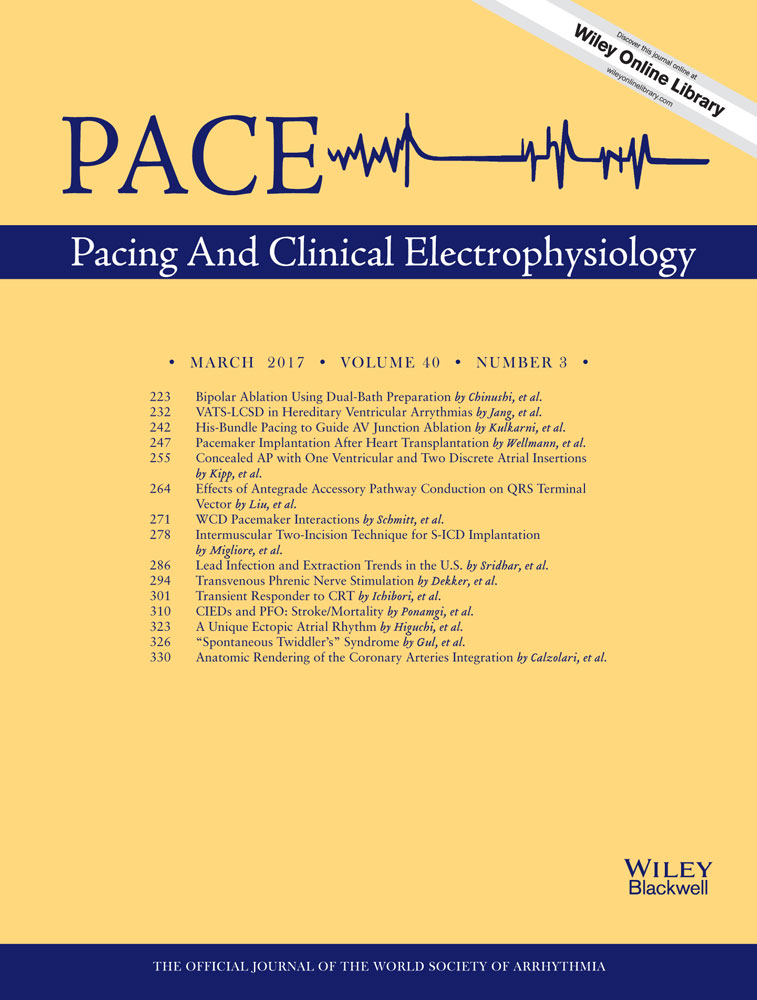Concealed Accessory Pathways with a Single Ventricular and Two Discrete Atrial Insertion Sites
Author Disclosures: Frederick T. Han has received Honoraria from Biotronik and research support from Boston Scientific, St Jude Medical. Jonathan Hsu has received honoraria from St. Jude Medical, Medtronic and Biotronik, and has served on Advisory Boards for Janssen Pharmaceuticals and Bristol-Myers Squibb. Melvin M. Scheinman has received honoraria for lectures from St Jude Medical, Biotronick, Medtronic, and Boston Scientific, and is on a data monitoring committee for Gilead. Other authors declare no conflict of interest.
Abstract
Background
Atrioventricular reciprocating tachycardia (AVRT) utilizing a concealed accessory pathway is common. It is well appreciated that some patients may have multiple accessory pathways with separate atrial and ventricular insertion sites.
Methods
We present three cases of AVRT utilizing concealed pathways with evidence that each utilizing a single ventricular insertion and two discrete atrial insertion sites.
Results
In case one, two discrete atrial insertion sites were mapped in two separate procedures, and only during the second ablation was the Kent potential identified. Ablation of the Kent potential at this site remote from the two atrial insertion sites resulted in the termination of the retrograde conduction in both pathways. Case two presented with supraventricular tachycardia (SVT) with alternating eccentric atrial activation patterns without alteration in the tachycardia cycle length. The two distinct atrial insertion sites during orthodromic AVRT and ventricular pacing were targeted and each of the two atrial insertion sites were successfully mapped and ablated. In case three, retrograde decremental conduction utilizing both atrial insertion sites was identified prior to ablation. After mapping and ablation of the first discrete atrial insertion site, tachycardia persisted utilizing the second atrial insertion site. Only after ablation of the second atrial insertion site was SVT noninducible, and VA conduction was no longer present.
Conclusions
Concealed retrograde accessory pathways with discrete atrial insertion sites may have a common ventricular insertion site. Identification and ablation of the ventricular insertion site or the separate discrete atrial insertion sites result in successful treatment.




